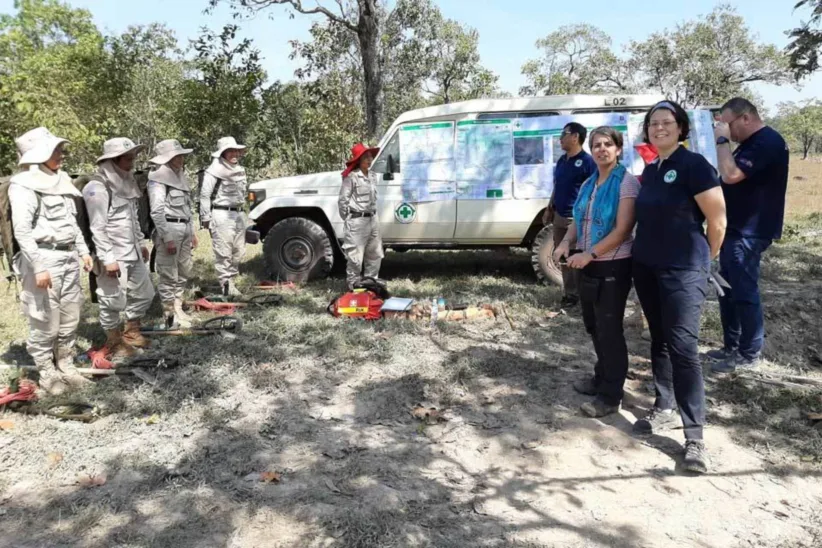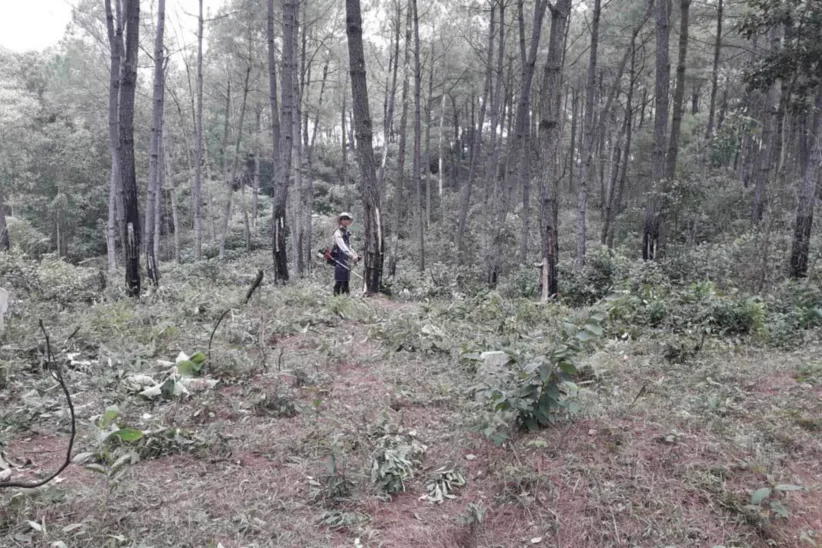Blog: Beginning our environmental mainstreaming in mine action journey
Everyone needs to play their part in protecting the environment – and the mine action community is no exception.

Starting any new role can be a daunting prospect, especially when you move into a new sector. In their first blog together, Kendra Dupuy and Linsey Cottrell report on their first field visits and initial thoughts on the challenges ahead as they begin an innovative joint project to improve environmental safeguarding across Norwegian People’s Aid’s mine action and disarmament programmes.
New perspectives on the challenge of our time
Between us, we have a combined experience of 35 years’ work in the environmental sector but when we took on our new roles this summer, we both recognised that these would be unique and challenging positions. Sustainability and the environment have never been so high on the global agenda and it is vital that all sectors do what they can to respond to the threats that environmental change and degradation pose to communities and ecosystems. The mine action sector must also do its bit.
We have both come to the project with very different environmental specialisms but we believe this will be of real benefit. For Kendra this means drawing on her experience as a policy advisor and researcher on natural resource and environmental management in low and middle-income countries affected by or recovering from armed conflict. She also hopes to integrate the perspectives she has gained from working on gender mainstreaming in mine action and disarmament.
Meanwhile Linsey expects her diverse practical experience from the environmental consultancy sector to come in useful. This has included projects for industrial, defence and commercial clients, and issues ranging from land quality, to environmental management and the mitigation of environmental risks.
Into the field
This December, we stepped away from our desk-based planning to undertake our first field research, visiting Norwegian People’s Aid’s (NPA) field operations in Cambodia and Vietnam. We were there to meet members of the NPA team, speak to NPA partners and other stakeholders and build on our understanding of mine action activities. We need to understand the environmental issues that the sector faces, how these could be addressed and, where possible, try to identify opportunities for enhancing the environment in the communities in which NPA works.
In Cambodia, NPA have been supporting the Cambodian Mine Action Authority (CMAA) in drafting their first national mine action standard to cover environmental management. With implementation planned for 2020, it will be useful to track progress on compliance and how this may influence current working practices across the country. In Ratanakiri Province, we saw how NPA Cluster Mine Remnant Survey techniques and the use of mine detection dogs, together with drone surveillance of confirmed hazardous areas to plan work tasks in detail, are all helping to focus NPA’s resources more effectively. This helps improve efficiencies and so indirectly reduces impacts on the environment by minimising the time spent undertaking field activities. A Canadian-Cambodian team – Demine Robotics – were also trialling their robotic mine excavator unit on cluster mines in Ratanakiri after a four-year development programme. We were delighted to hear of their successful trial. As well as looking to increase efficiencies on-site, this may also have a net environmental benefit with mine disposal in a designated area.

In Vietnam, we visited Thừa Thiên Huế and Quảng Trị provinces, which were among the most heavily bombed during the US-Vietnam war. Here we observed trials for two other new technologies. The first was the remote controlled Bearcat system for vegetation removal, which again could lead to time savings and improve safety in preparing an area for clearance. Ideally, as little vegetation as possible should be cleared, with teams planning how much needs to be removed to allow safe and effective working areas and whether this is done by machine or manually.
The second new technology was the Scorpion dual sensor detection system, which uses electro-magnetic induction, a total field magnetometer and accurate GPS to allow Battle Area Clearance teams to better distinguish between actual munitions and metal fragments, again leading to more efficient working practices.
NPA Vietnam has already been thinking more broadly about how they can influence, support or link with local partners on environmental projects for the local community. Initial ideas have included opportunities to support growth in traditional craft industries that incorporate employment opportunities for local women; the local cultivation of co bang grass – a sustainable craft material; and producing a product that is a sustainable alternative to plastic-based products. It will be extremely useful to hear about other opportunities and ideas that NPA staff and their partners may have and how these may be developed
Where to next?
We will use the knowledge gained from this first trip to plan and tailor our follow-up visits to some of the other countries where NPA operates. We’re particularly interested in exploring potential regional differences and constraints, and we’ll be documenting the good practices already taking place and, were relevant sharing knowledge to enhance them. We’ve already had great support from NPA staff in the field and we’re really looking forward to the task ahead.
It’s already clear that one thing the sector as a whole needs to consider is the impact of climate change, which is only just coming onto its radar. One of the challenges will be to understand and identify where and how climate change is likely to impact the regions in which we work. This will be especially difficult in countries that may not yet have completed their climate change forecasting or identified which of their regions may be most affected in the next five to 10 years. Of course, the impacts of climate change will vary globally, but whether it is increased rainfall, flooding, the risk of landslides, higher summer temperatures, drought or increased soil erosion, these could all influence mine action activities, risks to communities and how we need to work to reduce them.
It just remains to extend our huge thanks to both NPA Cambodia and NPA Vietnam for being so supportive for our first visits. It has been superb to hear your ideas and to be met with great positivity and enthusiasm as we’ve explored how environmental safeguarding could be embedded.
Kendra Dupuy is a Senior Environmental Adviser at Norwegian People’s Aid, Linsey Cottrell is CEOBS’ Environmental Policy Officer. Our joint project is funded by the Norwegian Ministry of Foreign Affairs.
